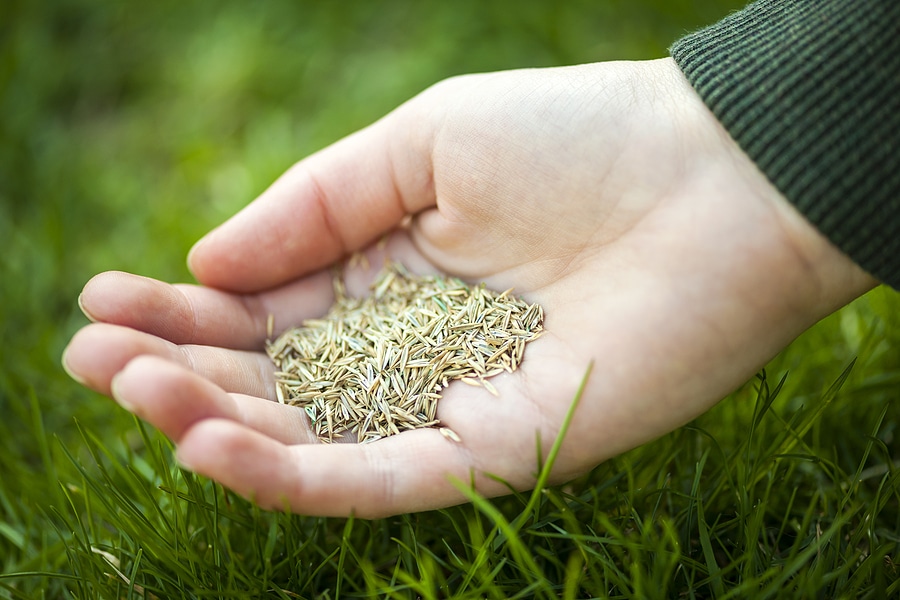As the leaves start to change and the air grows crisper, it’s a signal that fall is upon us in Carmel, Indiana. It’s also a perfect time to give your lawn a little extra TLC. One of the most effective ways to rejuvenate your turf is by overseeding. This process involves sowing grass seed over an existing lawn to thicken the grass cover, improve its health, and fill in any bare or thin patches. Continue reading to learn more from the team at Greenworks Lawn Care.

The Benefits of Fall Overseeding
1. Optimal Soil and Air Temperatures
Fall offers the ideal conditions for overseeding. The soil is still warm from the summer months, which promotes quicker germination, while cooler air temperatures reduce stress on the young grass plants.
2. Reduced Weed Competition
Weeds tend to be less aggressive in the fall, allowing the new grass seedlings to establish themselves without as much competition.
3. Less Water Required
The milder temperatures and increased dew in the fall can reduce the need for constant watering, helping you save on water bills.
4. Improved Disease Resistance
With fewer disease pressures in the fall, the young grass plants have a better chance of thriving and establishing strong root systems.
Step-by-Step Guide to Fall Overseeding
1. Assess Your Lawn
Walk around your lawn and identify areas that are thin, bare, or have poor grass coverage. This will help you determine where to focus your overseeding efforts.
2. Mow the Lawn
Begin by mowing the existing grass to a height of about 1.5 to 2 inches. This allows sunlight to reach the new seedlings and prevents them from getting smothered.
3. Remove Debris
Rake up any leaves, sticks, or other debris on the lawn. This ensures that the grass seed makes good contact with the soil.
4. Aerate the Soil
If your soil is compacted, consider aerating it using a lawn aerator. This creates small holes in the soil, allowing air, water, and nutrients to reach the grassroots.
5. Select the Right Seed
Choose a grass seed variety that is well-suited to your climate and the specific conditions of your lawn. Consider factors such as sun exposure, soil type, and foot traffic.
6. Seed Application
Use a broadcast spreader to evenly distribute the grass seed across your lawn. Be sure to follow the recommended seeding rate on the seed packaging.
7. Fertilize
Apply a balanced, slow-release fertilizer to provide essential nutrients for both the existing grass and the new seedlings.
8. Water Thoroughly
Water the newly seeded areas immediately after overseeding and continue to keep the soil consistently moist until the new grass is established.
9. Monitor and Maintain
Keep a close eye on the progress of your newly overseeded areas. Avoid heavy traffic in these areas until the grass is well-established.
10. Regular Maintenance
Continue your regular lawn care routine, including mowing, watering, and fertilizing as needed.
Need help with lawn repair? The Greenworks Lawn Care experts are ready to help you get your Carmel, IN, lawn in top-notch condition. Contact us today at (317) 663-0222 to schedule an appointment.









Comments are closed.